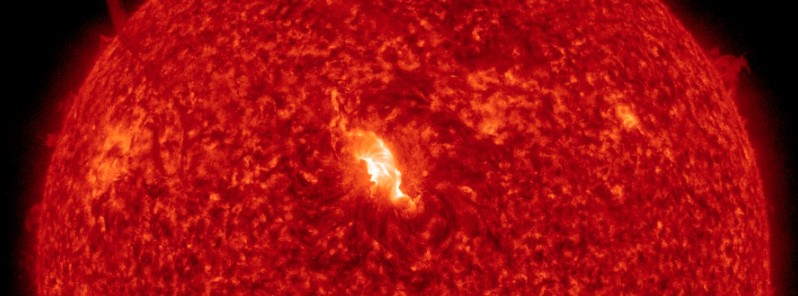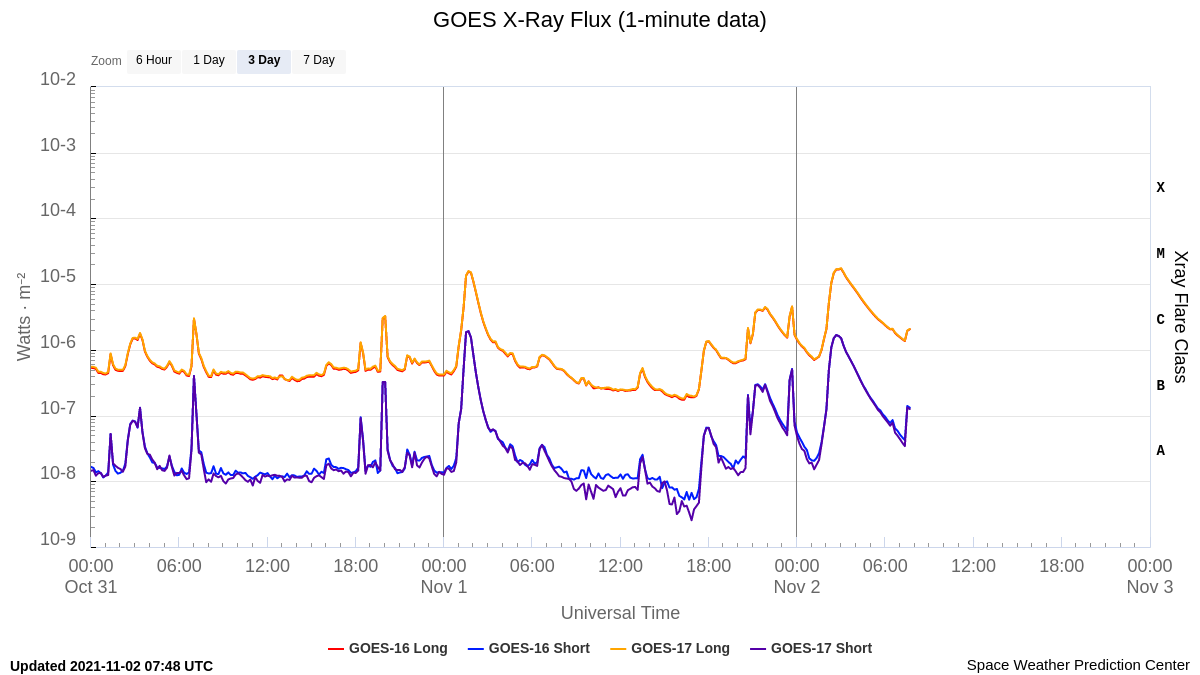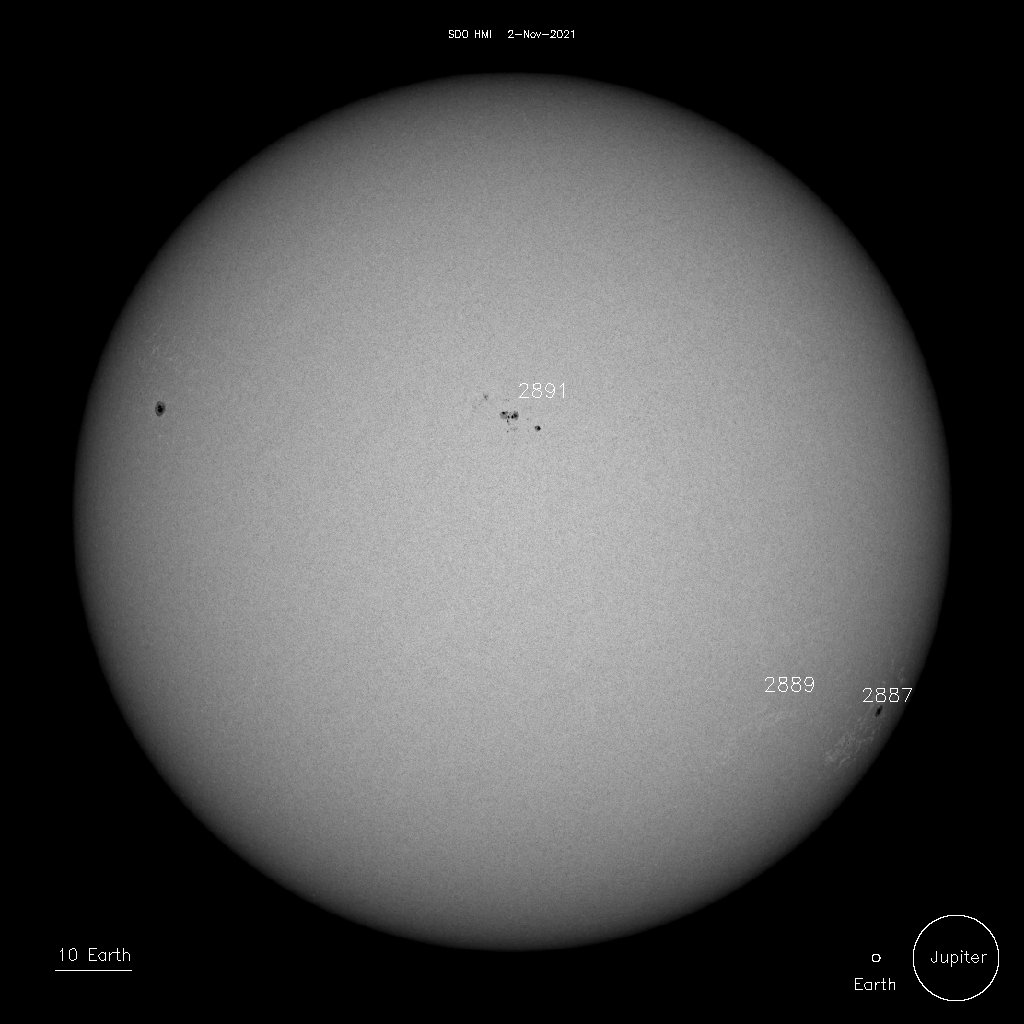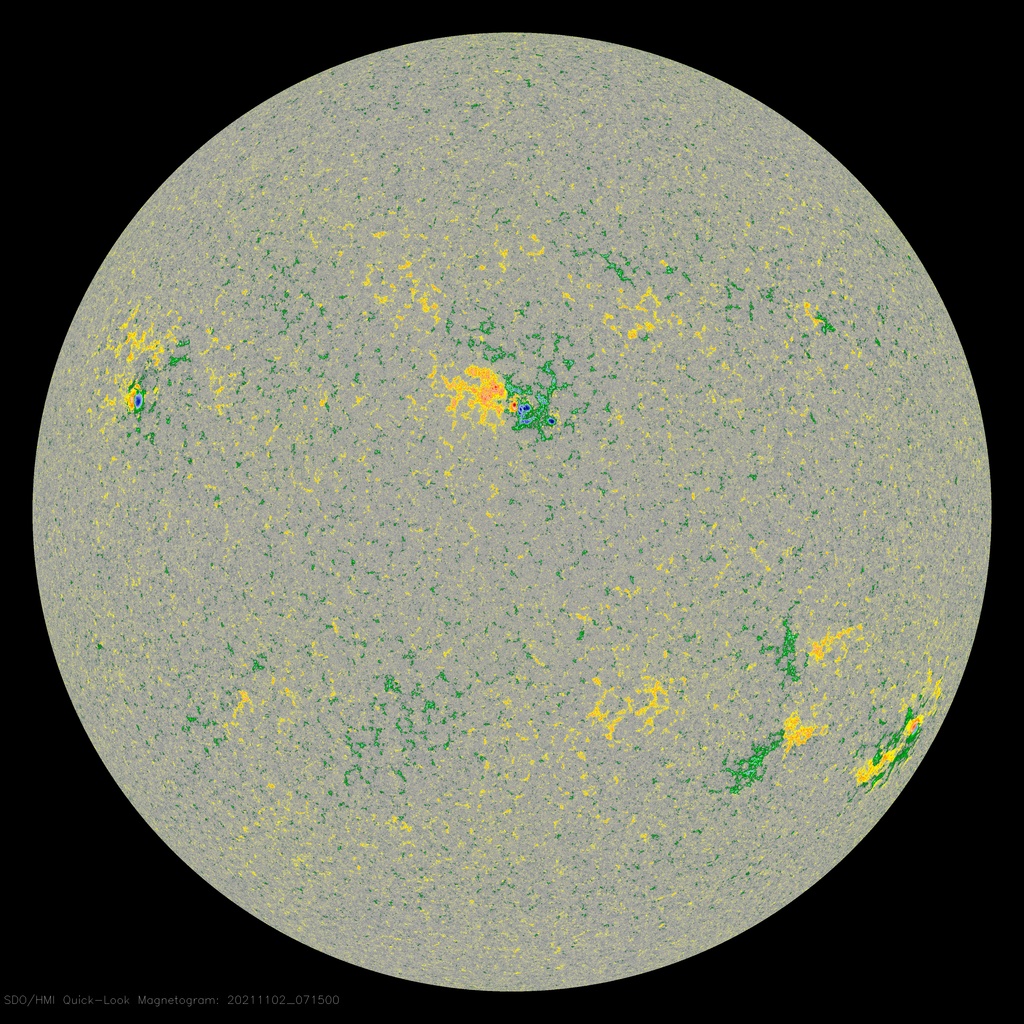Long-duration M1.7 solar flare erupts from geoeffective AR 2981, CME impact expected

A long-duration M1.7 solar flare erupted from geoeffective Active Region 2981 at 03:01 UTC on November 2, 2021. The event started at 01:20 and ended at 03:50 UTC.
The event was associated with a 10cm Radio Burst (tenflare) peaking at 110 sfu at 02:36 UTC.
A 10cm radio burst indicates that the electromagnetic burst associated with a solar flare at the 10cm wavelength was double or greater than the initial 10cm radio background. This can be indicative of significant radio noise in association with a solar flare. This noise is generally short-lived but can cause interference for sensitive receivers including radar, GPS, and satellite communications.
A Type II Radio Emission with an estimated velocity of 626 km/s was registered at 01:29 UTC. These emissions occur in association with eruptions on the Sun and typically indicate a coronal mass ejection (CME) is associated with a flare event.
In addition, a Type IV emission was registered at 01:30 UTC. Type IV emissions occur in association with major eruptions on the Sun and are typically associated with strong CMEs and solar radiation storm.
The flare produced a halo CME, with an impact to Earth expected late November 3 or early November 4.
Some of the raw imaging from LASCO shows what looks to be a full halo CME but I’m waiting for it to all be processed before I say anything further. pic.twitter.com/kPPZNyNWQo
— CocoasCola (@CocoasCola) November 2, 2021


This region is located in geoeffective position and any CME produced by it would most likely be Earth-directed.




Solar activity reached moderate levels in 24 hours to 00:30 UTC on November 2 as Region 2887 (beta-gamma) produced an M1.5 flare1, with associated Type-II (626 km/s) and Type-IV radio emissions, at 01:45 UTC on November 1.2
The region continued to exhibit decay, yet remained the most active region on the visible disk. The region was also the source of a C4 flare at 21:33 UTC with an associated tenflare that peaked at 110 sfu on 2 695 MhZ at 21:14 UTC.
Analysis of GOES-16 SUVI imagery suggested CME-related signatures with this C4 flare and SOHO/LASCO C2 imagery indicated a CME departing the SW limb, first clearly observed at 21:36 UTC.
Region 2891 (N16E03, Dai/beta) was mostly quiet, decayed slightly, and exhibited continuing separation between the leader and trailer spots. Region 2893 (N15E57, Hsx/alpha) was quiet and stable throughout the period.
The CME associated with the M1 flare that was observed in LASCO C2 coronagraph imagery beginning at 02:00 UTC on November 1 was analyzed and determined to have a likely Earth-directed component with an estimated arrival time at Earth of approximately 06:00 UTC on November 4.
Updates:
- Series of CMEs expected to impact Earth, G2 – Moderate geomagnetic storm watch in effect – The Watchers
- Series of CMEs impact Earth, sparking G3 – Strong geomagnetic storming – The Watchers
References:
1 Moderately strong M1.5 solar flare erupts from AR 2887 – The Watchers
2 Forecast Discussion Issued: 2021 Nov 02 0030 UTC – Prepared by the U.S. Dept. of Commerce, NOAA, Space Weather Prediction Center
Featured image credit: NASA SDO/AIA 304

Seemed way stronger than an M1.5 in my opinion. I mean look at the buildup hours before it fired. That was quite the flare.
excellent reporting Mr Blaskovic. Thank you